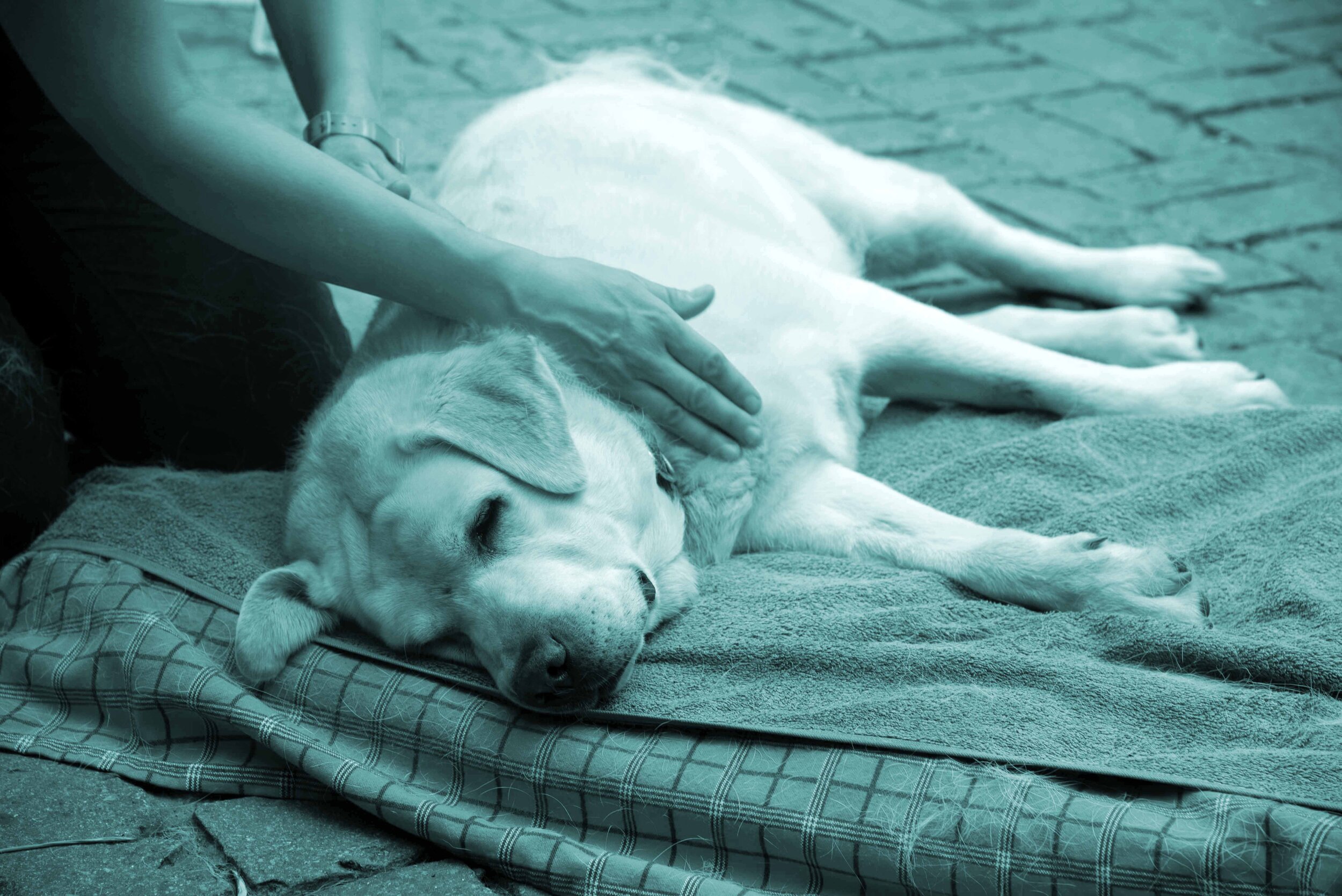Clinical Massage for Dogs
Far from being a treat or an indulgence, massage can play as much part in your dog’s overall health as nutrient supplements, quality food and exercise.
Even normal activities of everyday life such as vigorous play, getting in and out of the car, or climbing/coming down stairs can impact on the health of your dog’s muscles and joints.
Massage is completely natural, non-manipulative, and complementary to veterinary care.
I have studied for two years with Natalie Lenton of the UK Canine Massage Guild and can utilise over 20 techniques, including myofascial release, lymphatic drainage and the patented Lenton ™ method for assessing and treating musculoskeletal problems.
Clinical massage for dogs can help with many conditions including:
Arthritis
IVDD
Spondylitis
Hip dysplasia
Elbow dysplasia
Osteochondritis Dessecans (OCD)
Degenerative Myelopathy
In addition, massage for dogs, as for humans, can support recovery from injuries such as strains (muscle damage) and sprains (ligament damage) as well as supporting a fuller and faster recovery from surgery, with less likelihood of re-injury.
Massage can help by
Reducing oedema and/or inflammation
Enhancing vascular blood flow
Improving drainage of lymphatic fluid which directly supports immune function
Softening and stretching muscle fibres without putting strain on the joints
Targeting trigger points and areas of tension that may be causing pain
Reducing adhesions (muscle tissue and connective tissue that is sticking together) and the build-up of scar tissue post-injury
Stimulating the parasympathetic nervous system (rest and digest), lowering the heartrate, promoting relaxation and improving quality of sleep.
It’s common for dogs to hide their pain, so it’s hard for owners to be sure whether their dog is suffering significant discomfort
Owners can use the ‘Five Principles of Pain’ to identify areas that indicate underlying pain issues
1. Gait: is your dog moving smoothly or can you see signs of stiffness or lack of symmetry?
2. Posture: how does your dog sit and stand? Is their spine straight? Do they throw a leg to one side when they sit?
3. Performance: is your dog athlete knocking poles or reluctant to compete?
4. Behaviour: has your pet become grumpy or withdrawn.
5. Activities Of Daily Living (ADLs): is your dog struggling with stairs or getting in and out of the car?
Answering ‘yes’ to any of these questions could mean that your dog has underlying pain issues that may benefit from clinical massage.
FAQs for Clinical Canine Massage Therapy
I often massage my own dog when we cuddle, how is your massage different?
Most dog owners know how their pets respond to the power of human touch, but clinical massage offers far more than a bum scratch or a belly rub. It’s a completely natural way to support fatigued muscles, tired joints and the body’s own healing process.
I have studied for two years with Natalie Lenton of the UK Canine Massage Guild and can utilise over 20 techniques, including myofascial release, lymphatic drainage and the patented Lenton ™ method for assessing and treating problems.
How many sessions will my dog need to have?
You should start to see an improvement in your dog within 1-3 sessions. If we’re not seeing any improvement within that time I will refer you back to your vet.
Do I need to ask my vet?
Yes. Massage is complementary to vet care, but there are some contraindications so you will need your vet’s permission. I will provide all the required paperwork, including a letter for your vet.
What kind of issues can clinical massage help with?
· Arthritis
· IVDD
· Spondylitis
· Hip dysplasia
· Elbow dysplasia
· Osteochondritis Dessecans (OCD)
· Degenerative Myelopathy
· Mobility Issues
In addition, massage can support recovery from injuries such as strains (muscle damage) and sprains (ligament damage) as well as supporting a fuller and faster recovery from surgery, with less likelihood of re-injury.
How do I know a massage will help my dog’s specific problem?
I don’t have a set routine. Every massage is unique and aims to support your dog’s specific needs.
My dog hardly keeps still for me, let alone other people. How will you massage him?
I’m used to fidgety, stressed dogs. My background in behaviour means that I am sensitive to the body language being presented and I would never force a dog into doing something it doesn’t want to do. I rely on gentle persuasion to win confidence, and that is usually enough.
Where will the massage take place?
I will come to your home, where your dog will feel most comfortable. We’ll assess the needs of your dog.
How long will it take?
It usually lasts around 40 mins to an hour, depending on the size of the dog.
Do you do aromatherapy massage?
I only use essential oils in Herbal Choices therapy. Because of my self-selection approach, I do not use them to apply during massage.
How does massage work?
Massage can help by
· Reducing inflammation
· Enhancing vascular blood flow bringing fresh oxygen and nutrients to tissues
· Improving drainage of lymphatic fluid which directly supports immune function
· Softening and stretching muscle fibres without putting strain on the joints
· Targeting trigger points and areas of tension that may be causing pain
· Reducing adhesions (muscle tissue and connective tissue that is sticking together) and the build-up of scar tissue post-injury
· Stimulating the parasympathetic nervous system (rest and digest), lowering the heartrate, promoting relaxation and improving quality of sleep.
I’m trained to perform massage that should offer you results you can see in 1-3 sessions. If we don’t see improvement during this time, I will refer you back to your vet.
How much does it cost?
Initial session are £60, follow-up sessions are £40. If you are further than ten miles away I will charge 45p per mile.




